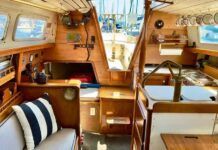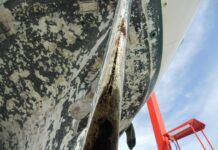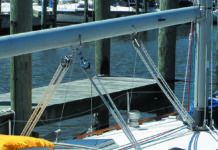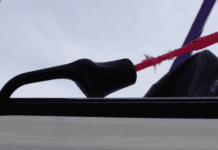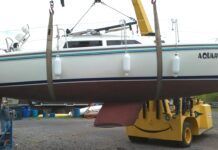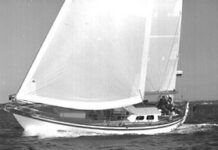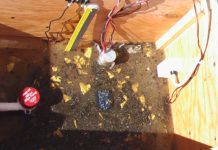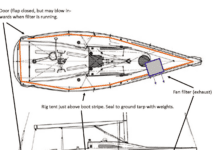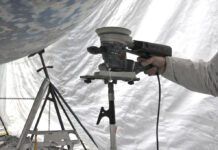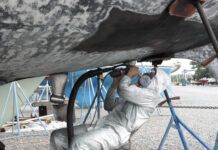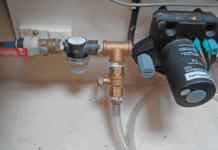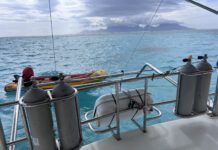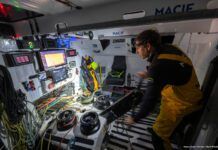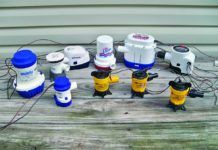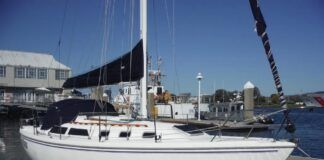Years ago, having made too many mistakes at both extremes of the fix-it mentality, either by being in too much of a hurry, or by tackling a job with a sort of grim, over-earnest desire to make a “professional” job of it, I adopted the following dictum: Don’t use glue until you’ve tried tape or a rubber band, and don’t use metal until you’ve tried rope. This attitude gives you a chance to consider a project in place before you have to join things together in a chemical death grip or drill a hole in your boat. (As a rule, boats should have as few holes as possible drilled through them. Bob Derecktor, the legendary boatbuilder, thought nothing of cutting a 54-foot metal boat in half with a torch, removing a few inches out of the middle, and welding it back together-but even he was careful about drilling holes in it.)
Very often, it turns out that a fat rubber band or a whipping is all you need after all, and six pounds of self-tapping stainless steel screws can be put back in their bin.
I’m glad any time that rope can be substituted for metal, and one of the subjects I found intriguing this winter was the discussion of using high-tech rope for lifelines.
In the March PS Advisor column we discussed, with the help of Brion Toss, how best to make terminals on Spectra-based lifelines. We suggested seizings, and Brion approved, but he also said that by the time you take care to seize a thimble properly into the end of a lifeline, you might as well have spliced it in.
The rated breaking strength of standard vinyl-covered lifeline (3/16″ wire with an outside diameter of 5/16″ including the vinyl) is 3,700 lbs. Presumably you’d replace that with something like Sta-Set X Lite Spectra braid from New England Ropes, 5/16″ diameter. It has a breaking strength of 3,300 lbs., so we’re in the ballpark there.
Neither of my local West Marine stores had that particular rope in stock, but I was impatient to see how a seizing would work, so I picked up 15 feet of 3/16″ Brite Lite Spectra (for small control lines). It has a breaking strength of 1,350 lbs. and a safe working load of 200 lbs.-not enough for a real lifeline, but light enough to be tested by a Subaru station wagon without burning out the clutch. I seized a nylon thimble into one end, working carefully with waxed sail twine, and put an extra-careful seizing below that. I would have tried a splice in the other end, but the smallest fid I had was 5/16″, and I was still impatient. So I linked the thimble to our Dillon dynamometer with a big carabiner, shackled the dynamometer to the hitch (with a couple of boat cushions underneath to catch it when it fell), tied the other end of the line around a maple tree with a bowline, and pulled.
I actually thought the line would break at the bowline, but after a bit of steady tugging by the Subaru, there was a jerk and it was all over. The line had pulled slickly through both seizings at exactly 500 lbs. on the dial. I’m not sure whether that’s good or bad, but I’m surprised the bowline won.
I decided to try a seizing at one end and a splice at the other. After doing plenty of double-braid eye splices, I figured this core-to-core stuff wouldn’t be too tricky, so I went back to West and bought some 1/4″ Brite Lite, and some T-900 Technora/Spectra in both 1/4″ and 5/16″, as well as the New England Ropes Uni-Fid II splicing kit, which supposedly goes down to 1/4″.
After considerable effort I have managed to extract the core of the Brite Lite and make the requisite markings here and there. I have inserted the tip of the smaller Unifid into the cover. Now it’s completely wedged, not even close to the junction. Can’t budge it. I should have started with the 5/16″ T-900.
My deadline is upon me, and once again impatience has taught me a lesson. But hold-comforting words have arrived by way of the PS Advisor on the the back page. And those seizings are looking pretty good right now.
-Doug Logan



